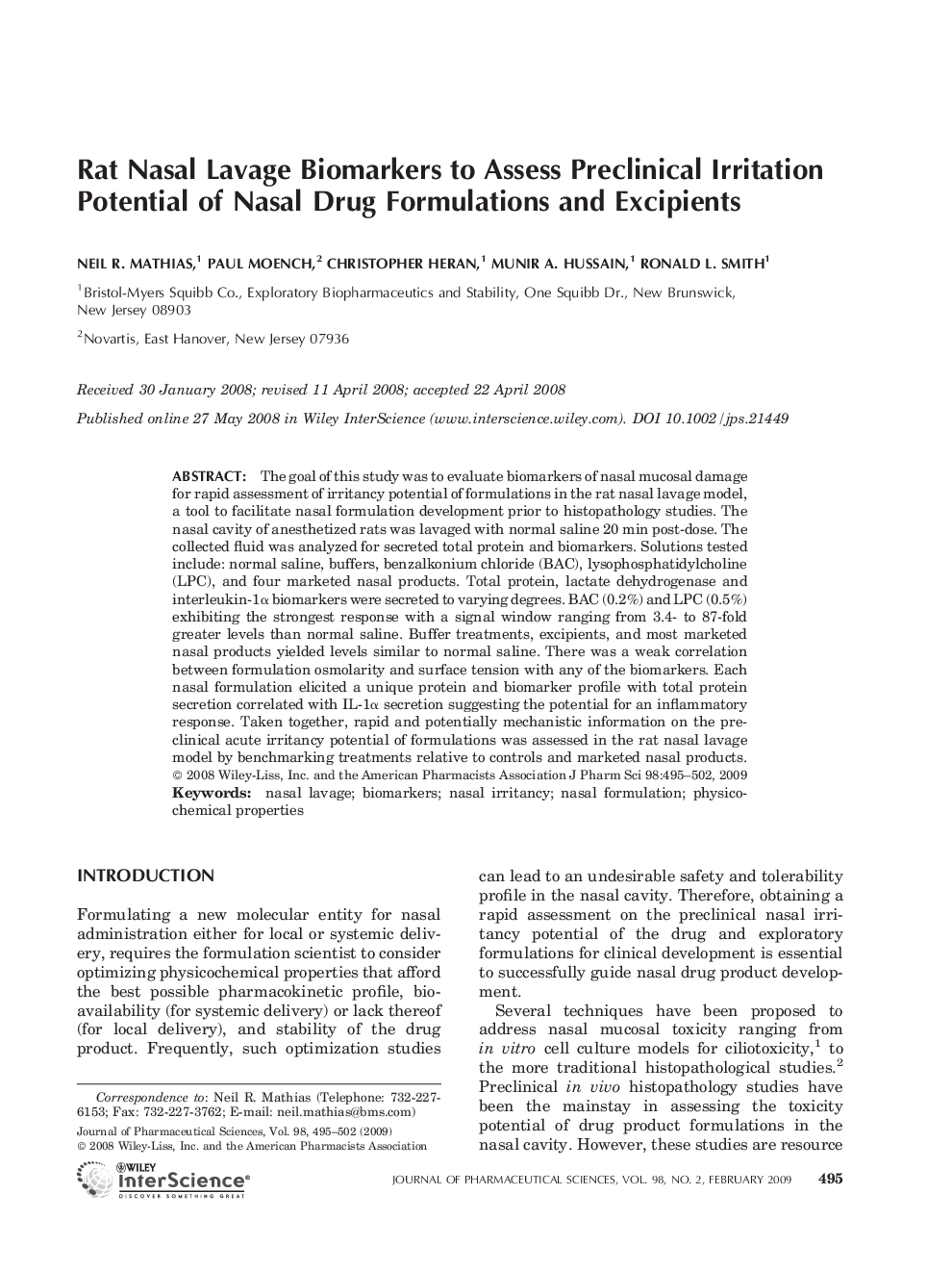| Article ID | Journal | Published Year | Pages | File Type |
|---|---|---|---|---|
| 2487124 | Journal of Pharmaceutical Sciences | 2009 | 8 Pages |
Abstract
The goal of this study was to evaluate biomarkers of nasal mucosal damage for rapid assessment of irritancy potential of formulations in the rat nasal lavage model, a tool to facilitate nasal formulation development prior to histopathology studies. The nasal cavity of anesthetized rats was lavaged with normal saline 20 min posâtdose. The collected fluid was analyzed for secreted total protein and biomarkers. Solutions tested include: normal saline, buffers, benzalkonium chloride (BAC), lysophosphatidylcholine (LPC), and four marketed nasal products. Total protein, lactate dehydrogenase and interleukinâ1α biomarkers were secreted to varying degrees. BAC (0.2%) and LPC (0.5%) exhibiting the strongest response with a signal window ranging from 3.4â to 87âfold greater levels than normal saline. Buffer treatments, excipients, and most marketed nasal products yielded levels similar to normal saline. There was a weak correlation between formulation osmolarity and surface tension with any of the biomarkers. Each nasal formulation elicited a unique protein and biomarker profile with total protein secretion correlated with ILâ1α secretion suggesting the potential for an inflammatory response. Taken together, rapid and potentially mechanistic information on the preclinical acute irritancy potential of formulations was assessed in the rat nasal lavage model by benchmarking treatments relative to controls and marketed nasal products. © 2008 WileyâLiss, Inc. and the American Pharmacists Association J Pharm Sci 98:495-502, 2009
Related Topics
Health Sciences
Pharmacology, Toxicology and Pharmaceutical Science
Drug Discovery
Authors
Neil R. Mathias, Paul Moench, Christopher Heran, Munir A. Hussain, Ronald L. Smith,
